When it comes to city passes and travel cards, it’s usually fairly easy to figure out whether they would be worth it for you or not. For things like the Paris Pass or London Pass, they have a list of the most popular attractions and how much they cost, right there for you to see. The Swiss Travel Pass, however, is shrouded in mystery, or at least it was until I spent several days tracking down all of the prices and benefits.
A great many of the visitors and commenters on my popular page about where to go in Switzerland on a short visit are wondering whether the Swiss Travel Pass is a good deal. Embarrassingly, I’ve always had to answer that I found the pass too confusing to confidently advise people on. Now that has all changed, after literally days of research.
Note: This article was last updated in February, 2024.
Disclosure: This is a reader-supported website and some of the links are affiliate links where a small commission is paid to help keep this site going, but the cost to visitors is the same. The Swiss Travel Pass seems quite expensive at first, so it felt like it might be hard to get your money’s worth out of it. As it turns out, it’s pretty easy to get good value, and it’ll be a good deal for many visitors.
New in 2024
Prices increased an average of 5.9% from 2023 on the Swiss Travel Passes, but the Half Fare Card remains at CHF120, which is where it’s been for many years. Train fares in the country increased by similar percentages so the value is basically unchanged. There were no other notable changes to service or the included attractions and train routes.
>>>Buy the Swiss Travel Pass online
Where to stay in Interlaken and the Lauterbrunnen Valley
Since most people reading this will be visiting the Interlaken area and I get so many questions about it, I decided to write a detailed guide on which area to stay in while visiting this area.
>>>Where to stay in Interlaken or the Lauterbrunnen Valley in Switzerland
I included many huge photos in that post so readers will be able to get a better idea of what each place looks like and they are worth a look by itself.
>>>Lucerne or Interlaken: Which to visit and how long to stay?
The article just above will help you decide on how long to spend in each of Switzerland’s two best tourist areas.
Are you 100% sure where you want to go in Switzerland? This should help
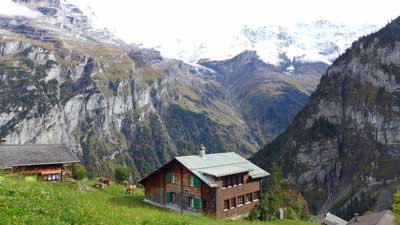
Zurich and Geneva are pleasant but dull. The good news is that Switzerland is packed with amazing sights and none of them are the big cities. If you aren’t 100% locked in yet, please read the article below and I think you’ll enjoy it.
Is the Swiss Travel Pass a good deal? Here's the short version

The bottom line is that the scenery, train journeys, and cable car rides in Switzerland are stunning and not found anywhere else in the world. They are also quite expensive if you pay for them one at a time. So no matter how you visit Switzerland, you are going to be paying quite a bit, or skipping the absolute best things that you’ve come there to see.
With good planning it’s quite easy to get great value out of a Swiss Travel Pass, but it might be a poor choice for those who don’t like to plan ahead. You can easily do a scenic train ride and a cable car in the same day, and still have time to do a scenic hike in the process.
First class or second class? Good news for most people
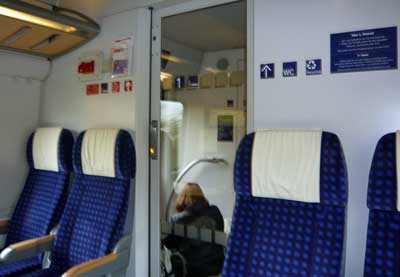
That said, Swiss Trains are literally the nicest in Europe and even the Second Class seats and carriages are nicer and roomier than trains in neighboring countries. The First Class seats are larger and nicer with only 3 across the cabin instead of 4, but honestly Second Class is perfectly comfortable for almost everyone.
Again, First Class on European trains like this is generally popular with business travelers where the company is paying and they need to get work done during the ride, and also senior citizens who don’t want to worry about a carriage full of backpackers. For most of the rest of us, Second Class is more than comfortable enough and the seat width and legroom compare to business-class airline seats. I’m a big and tall guy and I almost always travel in Second because it’s plenty comfortable enough and all the seats arrive at the same time anyway.
The longer you'll be in Switzerland, the better deal a Swiss Travel Pass will be
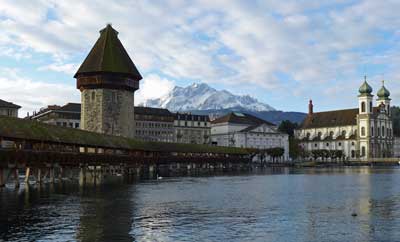
In other words, if you are staying 5 days or fewer, you have to do the math to determine your best option. But if you are spending even 6 or 7 days in Switzerland then the 6-day or 8-day Pass is almost guaranteed to be a great deal and your best choice. Once you have a Swiss Travel Pass you’ll absolutely love the ability to just hop on any train (excellent trains, always on time) and most boats and cable cars without having to worry about the cost. The per-day cost of an 8-day Pass even if you only use 6 of those days is about CHF65, and Switzerland is filled with amazing train rides and boats and cable cars that can get you that much value before noon each day.
Schilthorn (50% discount) and Jungfraujoch (25% discount) are cheaper with a Swiss Travel Pass
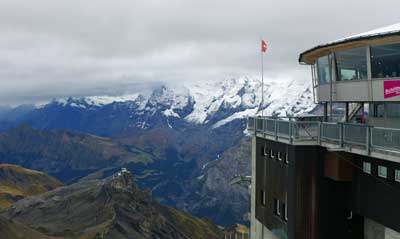
Both of those peak experiences are extraordinary and different from each other. Even so, compared to Jungfraujoch, Schilthorn is also faster and more comfortable on the way up and down. You can enjoy an excellent visit to Schilthorn in 4 hours or so (or a bit longer if you eat at the spinning Piz Gloria restaurant at the top), while a visit to Jungfraujoch requires closer to 6 hours.
NOTE: Schilthorn closes for maintenance for a week or two in late November most years.
Consider the Swiss Half-Fare Card instead
If you AREN’T going to be doing two or more of the long (and expensive) scenic train trips, you will get much better value out of the Swiss Half-Fare Card, which is explained a bit below.
Mt Rigi, near Lucerne, is 100% covered by the Swiss Travel Pass
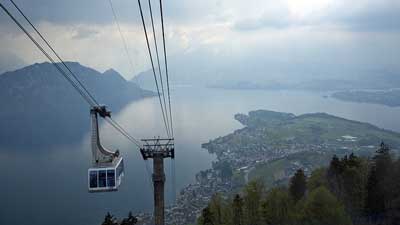
Is a Swiss Travel Pass right for you?
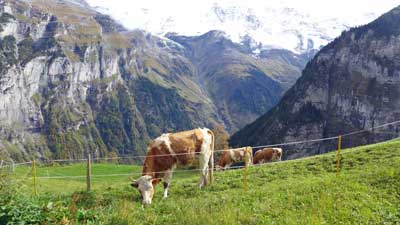
Most people only visit Switzerland for 5 or 6 days at most, so the 3-day and 4-day passes are the ones to focus on. But if you are staying for 8 days or more, those longer passes are almost certainly a great deal for you.
Long story short, if you plan on doing 2 of the more expensive scenic trains and the Jungfraujoch railway or the Schilthorn cable car, then the pass will save you money. Switzerland is expensive, but it’s worth it, and the travel pass can help make it a bit more affordable.
What the Swiss Travel Pass includes
- Free rail travel on normal trains and most scenic trains
- Discounted travel (about 50%) on popular tourist mountain trains
- Discounted travel (about 50%) on popular tourist cable cars
- Free travel on public transport in 75 towns and cities
- Free entry to around 500 museums in Switzerland
The Swiss Travel Pass covers the fare on the most popular scenic and panoramic trains. You can choose a normal seat in a regular carriage for no additional cost, but there is a supplement of CHF8 to CHF49 for a reserved seat in one of the special panorama carriages on these routes.
Prices of the 2024 Swiss Travel Pass
1st Class
- Adult 3-day Pass: CHF389
- Youth (4 to 25) 3-day Pass: 274
- Adult 4-day Pass: 469
- Youth (4 to 25) 4-day Pass: 330
- Adult 6-day Pass: 602
- Youth (4 to 25) 6-day Pass: 424
- Adult 8-day Pass: 655
- Youth (4 to 25) 8-day Pass: 469
- Adult 15-day Pass: 723
- Youth (4 to 25) 15-day Pass: 512
2nd Class
- Adult 3-day Pass: CHF244
- Youth (4 to 25) 3-day Pass: 172
- Adult 4-day Pass: 295
- Youth (16 to 25) 4-day Pass: 209
- Adult 6-day Pass: 379
- Youth (16 to 25) 6-day Pass: 268
- Adult 8-day Pass: 419
- Youth (16 to 25) 8-day Pass: 297
- Adult 15-day Pass: 459
- Youth (16 to 25) 15-day Pass: 328
Swiss Travel Pass Flex
This version costs a bit more, but you don’t have to use the travel days consecutively. It’s a great option for anyone who won’t be taking longer train rides each day.
- Adult 3 Flex days in 1 month (1st Class): CHF445
- Adult 3 Flex days in 1 month (2nd Class): 279
- Adult 4 Flex days in 1 month (1st Class): 539
- Adult 4 Flex days in 1 month (2nd Class): 339
- Adult 6 Flex days in 1 month (1st Class): 644
- Adult 6 Flex days in 1 month (2nd Class): 405
- Adult 8 Flex days in 1 month (1st Class): 697
- Adult 8 Flex days in 1 month (2nd Class): 439
- Adult 15 Flex days in 1 month (1st Class): 755
- Adult 15 Flex days in 1 month (2nd Class): 472
Where to buy the Swiss Travel Pass
The Swiss Half-Fare Card – A better option for many visitors
Far less confusing than the Swiss Travel Pass, you can instead get a Swiss Half-Fare Card, and it will be a better deal for many travelers. The price is lower and it’s much easier to do the math, and the discounts are greater on some things as well.
- Swiss Half-Fare Card for 30 days: Adults – CHF120 or US$129
What you get:
Those who buy the Swiss Half-Fare Card will get 50% discount on all trains, buses, and boats in Switzerland for up to 30 days, as well as 50% off all public transportation in 75 cities and towns.
>>>Buy the Swiss Half-Fare Card
Why the Half-Fare Card is a better deal for many
While the Swiss Travel Pass is a great deal for those doing many of the expensive scenic journeys and mountain sights within a few days, it’s not good value for those who are doing fewer of the expensive trips and/or those who are staying longer. Also, the Swiss Travel Pass only provides a 25% discount on the amazing Jungfraujoch Railway, which costs between CHF120 and CHF224 return depending on your starting point, while the Half-Fare Card provides a 50% discount.
The math is simple as well. You can just add up the cost of the trains, boats, and buses you’ll be taking while in Switzerland, and if the total is more than CHF240 or so, the Half-Fare Card will save you money.
Example itinerary:
- Zurich to Interlaken train (2nd Class): CHF50
- Schilthorn Cable Car: CHF112
- Jungfraujoch railway from Interlaken: CHF205
- Interlaken to Lucerne train (2nd Class): CHF33
- Mt Rigi roundtrip from Lucerne: CHF84
- Engelberg (near Lucerne) to Mt. Titlis Cable Car: CHF92
- Lucerne to Zurich train (2nd Class): CHF25
Total per person: CHF601
Total with Half-Fare Card (including price of card): CHF420.50
It would be tough to do all of those things in 4 days, although it is possible. If you bought a 4-day Swiss Travel Pass here is how it adds up:
4-Day Swiss Travel Pass: CHF259
Supplements for Schilthorn, Jungfraujoch, and Mt. Titlis: CHF203.25
Total cost: CHF462.25
Bottom line on the Swiss Half-Fare Card
Since the Half-Fare Card lasts 30 days and provides a larger discount on Jungfraujoch, it is better value for visitors who want to include that scenic top-of-Europe rail journey on their trip. The discounts also add up more quickly on Schilthorn and Mt. Titlis trips, just to name two examples, and you don’t have to take many longer rail journeys to get value out of the Half-Fare Card.
Swiss Saver Day Pass (A one-day unlimited travel pass)
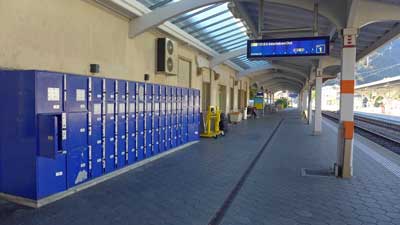
If you buy the Saver Day Pass at least 21 days in advance (and up to 60 days in advance) the 2023 cost is:
- 2nd Class (with Half Fare Card): CHF29
- 1st Class (with Half Fare Card): CHF82
- 2nd Class (with no Half Fare Card): CHF52
- 1st Class (with no Half Fare Card): CHF97
Once you research the normal cost of Swiss train fares you’ll see that the above prices are a very good deal for anyone riding more than 150 kilometers or so in a day. If you are just going, for example, from Zurich to Lucerne or Interlaken on a day, it’ll be cheaper to just buy that ticket individually. But if you are going from Geneva or Montreux to Interlaken or Lucerne then the Saver Day Pass will be much cheaper. Better still, you can use a Saver Day Pass to go from Interlaken to Geneva and back on the same day on the Goldenpass line and returning on the faster train through Bern, and it will still all be included for free.
If you don’t buy a Saver Day Pass at least 14 days in advance it’s more expensive, and if you only buy 1 to 3 days in advance it’s VERY expensive, so the key is to buy early. This is all confusing, but the Saver Day Pass should be a great option for many people only in Switzerland for one to three days.
Popular Swiss panorama scenic trains
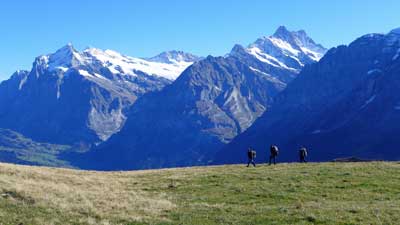
- Glacier Express
- Route: Zermatt to St. Moritz
- Train type: Panorama
- Journey time: 8 hours 3 minutes
- Distance: 291km
- 1st Class fare: CHF272
- 2nd Class fare: CHF159
- Compulsory seat reservation fee: CHF44 or 49
- Supplement for Swiss Pass holders: 13 to 33 for panorama carriage
- Bernina Express
- Route: Chur to Tirano and Lugano
- Train type: Panorama and bus
- Journey time: 4 hours 13 minutes and 3 hours 10 minutes
- Distance: 148km and 90km
- 1st Class fare: CHF113
- 2nd Class fare: CHF66
- Compulsory seat reservation fee: CHF32
- Supplement for Swiss Pass holders: 10 to 14 for panorama carriage
- GoldenPass Line
- Route: Lucerne to Montreaux
- Train type: Panorama
- Journey time: 5 hours 8 minutes
- Distance: 191 km
- Prestige Class fare: CHF131
- 1st Class fare: CHF96
- 2nd Class fare: CHF56
- Supplement for Swiss Pass holders: 8 to 15 for panorama carriage
- Gotthard Panorama Express (formerly Wilhelm Tell Express)
- Route: Lugano or Locarno to Lucerne
- Train type: Panorama and boat
- Journey time: 5 hours 21 minutes
- Distance: 182 km
- 1st Class fare: CHF164
- 2nd Class fare: CHF135
- Supplement for Swiss Pass holders: 39 to 49 for panorama carriage
- Swiss Chocolate Train
- Route: Montreux to Broc round trip
- Train type: Panorama or First Class
- Journey time: X hours X minutes
- Distance: 82 km
- 1st Class fare: CHF99
- 2nd Class fare: 89
- Supplement for Swiss Pass holders: 39
Popular Swiss scenic and theme trains
The scenic trains below are also extremely popular as sightseeing journeys rather than just as transportation, but can be used as both.
- Jungfraujoch round trip
- Route: Interlaken to Jungfraujoch
- Train type: special mountain train
- Journey time: 4 hours 41 minutes, round trip, plus time on top
- Distance: 73 km
- 1st Class fare: N/A
- 2nd Class fare: CHF224
- Supplement for Swiss Pass holders: 147 (so, a saving of CHF77)
- Gornergrat Railway
- Route: Gornergrat Railway
- Train type: Cog railway
- Journey time: 44 minutes return
- Distance: 10 km
- 1st Class fare: N/A
- 2nd Class fare: CHF90
- Supplement for Swiss Pass holders: 45
- Rigi round trip
- Route: Lucerne to Rigi
- Train type: Cog railway
- Journey time: 3 hours 25 minutes, plus time at the top
- Distance: 58 km
- 2nd Class fare: CHF78
- Supplement for Swiss Pass holders: None (this one is free with the pass)
- Mt Rigi Excursion (one-way and walk down)
- Route: Lucerne to Mt Rigi
- Train type: cogwheel train and/or cable car
- Journey time: 45 minutes up
- 1st Class fare: N/A
- 2nd Class fare: 49
- Supplement for Swiss Pass holders: 0
- Lotschberg Mountain Route and Centrovalli
- Route: Bern to Locarno
- Train type: Narrow gauge
- Journey time: 4 hours 40 minutes
- Distance: 212 km
- 1st Class fare: CHF158
- 2nd Class fare: CHF90
- Supplement for Swiss Pass holders: 5
- Jura round trip (Watchmaking Tour)
- Route: Neuchatel through Jura
- Train type: Regular
- Journey time: 3 hours 0 minutes
- Distance: 143 km
- 1st Class fare: CHF168
- 2nd Class fare: CHF108
- Supplement for Swiss Pass holders: 0
- Pre-Alpine Express
- Route: St. Gallen to Lucerne
- Train type: Regular
- Journey time: 2 hours 15 minutes
- Distance: 146 km
- 1st Class fare: CHF83
- 2nd Class fare: CHF47
- Supplement for Swiss Pass holders: 0
- Jura Foot Line
- Route: Basel to Geneva
- Train type: Regular
- Journey time: 2 hours 40 minutes
- Distance: 248 km
- 1st Class fare: CHF132
- 2nd Class fare: CHF75
- Supplement for Swiss Pass holders: 0
Popular Switzerland cable car rides
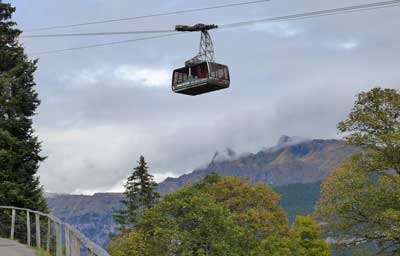
- Schilthorn
- Route: Stechelberg (Lauterbrunnen) to Schilthorn
- Train type: cable car
- Journey time: 1 hour
- 2nd Class fare: CHF108
- Supplement for Swiss Pass holders: 54
- Engelberg to Mt. Titlis cable car
- Route: Engelberg to Mt. Titlis
- Train type: cable car
- 2nd Class fare: CHF96
- Supplement for Swiss Pass holders: 46
The Swiss Travel Pass also includes free museum admission, but…
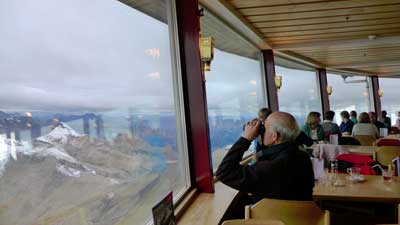
The problem is that the museums are only free on valid travel days, and almost no one would visit more than one or two museums with a Swiss Travel Pass. The trains and cable cars are so expensive that the pass gives very good value to cover those, so you don’t want to waste precious sightseeing time walking through a museum that only costs CHF10 anyway.
In other words, calculate the value of a Swiss Travel Pass on the travel savings only, and if you visit a museum here or there, then great. Most people are better off trying to squeeze in an additional train ride each day, and ignoring the museums. Switzerland is all about the outdoor scenery. As nice as the museums may be, they are not why you are there.
The pass includes free public transport in most Swiss cities
Similar to the free museum part of the offer, it’s best to ignore or minimize the value of free public transportation. It could be helpful in Zurich, but in most other Swiss tourist towns you won’t need much public transport. In fact, in Interlaken, each hotel or hostel guest automatically gets a card for free public transportation within the town (including between the two train stations).
So you might use a ride or two each day on public transport, but that won’t add up to much in terms of value of your Swiss Travel Pass.

Roger,
Thank you for the information, I have read through your other Switzerland articles and these comments and it is all well explained and appreciated. As we plan our trip this is the rough itinerary we were planning. We are planning to focus on the Oberland Area to do lots of hiking and enjoy the scenery. Thus we were thinking of using Wengen as our base for travel although I understand that will mean taking the 15min ride down to Lauterbrunnen to get started most days. Here is what I was thinking and have some questions below:
September 5-13
Day 1 Travel Zurich to Lucerne and spend the night (any recommendations- Hotel del Alpes?)
Day 2 Travel to Hotel Baren (stay 6 nights) Wengen Possibly hike near Lauterbrunnen or Mannlichen
Day 3 Hike Faulhornweg from Schynige Platte to First
Day 4 Hike near Klein Scheidegg (Eiger Trail/Panoramaweg)
Day 5 Hike gorges near Grindelwald: Gletscherslucht and Ober Grindelwaldgletscher
Day 6 Hike/Cable car up to Schilthorn (thought this may be a bit cheaper than Jungfrau and less crowded but with new Swiss Pass maybe that is the way to go for it to be covered?)
Day 7 Interlaken/Lake Thun/more hiking?
Day 8 Train to Bern and spend the night before heading to airport, any hotel suggestions?
Day 9 Depart from Zurich airport
Some questions:
-Does this itinerary sound logical? Any recommendations or changes?
-Based on what I have read I am thinking the half travel pass would be best with maybe the Jungfrau pass at a discount with all the travel in that area? What travel passes would you recommend for this travel? I see above you discussed this Jungfrau pass, can you explain its difference with the Bernese Oberland Pass for this are (may include Bern travel?)
Thanks for your time and advice!
Bogomir
Bogomir,
Yes, your itinerary looks very well planned and quite logical. It also looks like you aren’t trying to cram in too much, so you should have time to do additional things on many days. I think the Half Fare Card might be your best bet, but the Bernese Oberland Pass might also work. The Bernese Oberland Pass is basically the same as the Swiss Travel Pass except it only covers that small part of the country. So it works well for all the trains and cable cars including Schilthorn, and it can get you as far as Lucerne, but it doesn’t cover the full route on any of the special scenic trains. It does give you a 50% discount on the western portion of the GoldenPass, so it can be useful for that.
Overall the pass situation in Switzerland is incredibly confusing and the only way to be sure about which one is best is to check all of the prices using the different options, but that can take hours and you might also want to do some other things that you didn’t have on your list. The main Travel Pass is great for people taking at least a couple of the special scenic trains, and the Half Fare Card is best for most people who are only there for a few days and aren’t doing much long distance train travel. For situations like yours it’s harder to say. But with so much hiking on your itinerary and only a few cable cars and boat rides, the Half Fare Card looks like it might be best. Sorry I couldn’t be more sure. -Roger
Hi Roger,
Form Lugano ( as I have friends here and can stay for free ) please advise which areas I can visit and come back to Lugano same day ( so I don’t have to stay in a hotel and save the $ ).
I would like to visit the areas you have suggested – Interlaken to Lucerne from Lugano.
I have total of 5 days in Sept / October to visit please advise.
Thank you in advance.
Moin,
A free room is a great draw. Lugano is on a lake and just one lake over from Lake Como, so you can take a bus over there in a day. Aside from that I think you should ask your friend who lives there as I’m sure they know far more about the options than I do. Lugano to Lucerne is only two hours by train, but Interlaken takes more than 4 hours to reach from Lugano, so that’s tough for a day trip. -Roger
Hi Roger,
I am planning a 14 day trip to Europe in October
Please advise which cities I should visit ? If you can suggest and make a plan for 14 days.
I have enough miles to get an airline ticket from Pakistan to any city to fly in and fly out ( for example fly to Milan and fly out of a different city other than Milan )
Half Fare Card – which counties can you visit on this card by train and connect to the airport to fly in and out.
Thank you in advance
Moin,
Spending 14 days in Switzerland would be VERY expensive and I’m guessing you are talking about two weeks in Europe in general since you mention Milan. Suggesting an itinerary from scratch is tricky because everyone has different tastes, and that’s one reason why I wrote this post with 9 suggested first-time Europe itineraries for 1, 2, or 3 weeks. For each of the itineraries I mention the most popular and efficient add-ons, so hopefully you can look at those and come up with at least an outline of what you want to see. I am happy to answer other questions if you have them. -Roger
Hi Roger, thanks for your reply.
I did some calculations using the 3 day Swiss Pass (Days 3 to 5) and the difference came to about 45 CHF between Swiss Pass and Half Fare card. Based on these calculations, do you think Swiss Pass is better regarding convenience (no need to buy train tickets – just show the pass and go)?
BA,
Yes, I think that is a great way to look at it. Not only is it less hassle to use the Swiss Travel Card, but I’m sure you’ll find a few other uses for it to get that CHF45 in value out of it. Since you can just hop on almost any train or bus or boat or cable car, you’ll find a few more uses for it than what you are already planning. Have a wonderful trip. -Roger
Hi Roger:
Can you help with my itinerary (below)? Which pass should I buy – Swiss Pass or Half Fare card
Day 1 – Zurich Airport – Hotel (Zurich)
Day 2 – Zurich to Lucerne
Day 2 – Mt. Pilatus
Day 3 – Lucerne – Interlaken Ost via Golden Pass line
Day 3 – Visit Jungfrau
Day 4 – Interlaken to Zermatt
Day 4 – Visit Matterhorn Glacier Paradise
Day 5 – Zermatt to Zurich
Day 6 – Hotel (Zurich) – Zurich Airport
Thanks for your help
BA,
If you are ONLY going to do the things on your list I think the Half Fare Card is probably the better choice because you don’t have many expensive things that are covered by the Swiss Travel Pass, and the Half Fare Card gives a better discount (50%) on Jungfraujoch than the Swiss Travel Pass (25%) does. However, if you add another train trip or two and especially if you add Schilthorn (the cable car across the valley from Jungfrau that is now fully covered by the Swiss Travel Pass), the Pass might be a better deal. Basically, the Half Fare Card costs CHF120 per person and gets you 50% off pretty much everything you’ll do. The Swiss Travel Pass for 8 days costs CHF398, but it will cover nearly everything on your list except Jungfraujoch. The only way to be sure which is better is to add up all of the fares and compare them. Have a great trip. -Roger
Thanks for the reply. Seena
Hello,
Thanks for this blogpost and the replies you have given for the other travelers.
we are planning to do a 3 day trip to zurich. Our plan is to go to interlaken directly from zurich airport stay overnight and then stop over at lucerene the next day to zurich. for the third day, we are planning to go from zurich and check out Bern, come back to zurich for the stay and fly out the next day morning.
Would you recommend the swiss pass or just to buy the regular tickets. Also, if we do get regular, is it better to buy pre-paid or just over there? Thanks for the reply.
One more thing, where do you get the $32 tickets, i am seeing like gretaer than 50 costs, is it discount if you buy at the stations?
Seena,
I’m not sure which US$32 tickets you are referring to, but the tickets are all the same price if you buy online from the official Swiss Rail website. There are other ticket resellers that charge higher prices and sometimes do faster international deliveries. You can get online tickets and print them at home or keep them on your phone, so you won’t have to pay for delivery.
Unless you are planning to do some of the expensive attractions such as the Schilthorn cable car or take more longer train rides I don’t think a Swiss Travel Pass would be good value for you. I think the Half Fare Card is your best choice if these are the only trips and attractions you are doing.
For domestic tickets within Switzerland they are the same price whether you buy 30 days in advance or just before the train leaves. Many people like the convenience of buying tickets online and skipping the ticket queues when they get there, but the price is the same. You can buy half price tickets online as well from the Swiss site if you select Half Fare from the little “discount” slider before you pay. You just have to be able to show a valid Half Fare Card when you board the train with a half fare ticket. Let me know if you have any other questions. -Roger
Thankyou! After many hours of research I came across your site. For the first time I understand and can make the decision to purchase the Half Fare card.
Rosie,
Great. The Half Fare Card is the best deal for most visitors and it should work well for you. -Roger
hey mate, u have done an excellent job. the most elaborative n easiest way to explain the most complicated thing on earth. could u pls explain me the saver day pass and its benefits in detail. do we a discount with that day pass on mt. titlis excursion?? we three friends are thr in swiss for 3days. following is the iternary. pls suggest me some changes if any:-
day 1:- visiting zurich and reaching interlaken in the evening
day2:- interlaken sightseeing and visiting lauterbrunnen and wengen
day3:- visiting mt titlis and the evening visiting thun and boat ride back to interlaken.. so thinking to buy saver day pass on day 3
Vipul,
As I mention in the article, the Saver Day Pass is new, but it’s actually perfect for a trip like yours where you could easily spend CHF150 or more in one day on normal fares. Most likely the Half Fare Card will also be good value for you because it will save you a lot on all of the things you do on Day 1 and Day 2, in addition to the discount on the Saver Day Pass for Day 3. Buy at least 14 days in advance or the price goes up. -Roger
Hi
Appreciate your efforts and patience in replying the queries of the travelers. We are traveling to Lucern from Venice 2nd week of June and will be reaching early morning and have planned the following itinerary.
Day 1- Lucern to Mt.titlis
Day 2 – Lucern to Junghfrouh
Day 3 –
Day 4 – Lucern to Zurich and to Airport.
Need your suggestions and also what more we can add to the itinerary or modify it. Is the Swiss Pass the best option or we take the Swiss Half Price pass. We are 3 of us my husband and our teenage son. We also want suggestion on the best location to base for the mountain trips and to make best use of the Swiss holiday. The only fixed is that we have 4 days and 3 nights in Switzerland and we fly out on the 4th day evening. Would appreciate your response and will start booking post that.
Tanaya,
First you might want to have a look at my main article on where to go in Switzerland. My recommendation would be to stay in Interlaken on Day 2 and Day 3, and you can do Jungfraujoch and see all of the other amazing views and places in those two days. The trains from Interlaken start very early in the morning (first one is at 4:48am and take a bit over two hours) so you should be able to make it directly to the airport before your flight.
I think you’ll get some good ideas in the article I mention. As for which pass to get, the Half Fare Card gives a 50% discount on Jungfraujoch and 50% on almost everything else, while the Swiss Travel Pass only gets you a 25% discount on Jungfraujoch. If your teen is 15 or under he or she can do all of these things for free by getting a free Swiss Family Card. If he or she is 16 and older you technically need to pay full fare. However, if you get the Swiss Travel Pass instead you could do Mt Rigi instead of Titlis and it’s included, and you can do Schilthorn instead of Jungfraujoch, which is also included and also spectacular. There are other things included in the Swiss Travel Pass such as cable cars around the Interlaken area, so if you change your plans just a bit you can probably save money with that.
I’m happy to help if you have other questions. -Roger